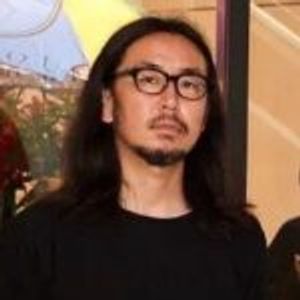From business to science, the number of situations where people advocate for the necessity of art is dramatically increasing. Although the world doesn’t look different under the influence of the pandemic, people’s minds are changing; under such change, how does everyone’s perception of art transform? Gallerists, artists, and collectors are now researching and predicting what kind of art will appear in the post-covid generation.
The 11th installment is about NFTs. NFT art utilizing blockchain technology is breathing new life into the market both in cryptocurrency and the art world. But only a minority of people may have a firm grasp on the reality and function of NFTs. It’s not surprising, as blockchain technology and NFTs are still growing. The following is a conversation between Junya Yamamine, who demonstrates the social potential of art with the media and corporations using his experience as a museum curator, Taihei Shii, a contemporary artist and pioneer who commercialized the use of NFTs in art, and artist Sputniko!, whose iconic piece titled “Menstruation Machine – Takashi’s Take” was sold at 50 ETH (around 15 million yen at the time). The second part is about the potential of NFT art, explored alongside examples.
The intrigue of a decentralized structure emerging and the context of value becoming rhizomatic
Junya Yamamine (Yamamine): Contemporary artist Simon Denny had an exhibition using the idea of blockchain in 2016. It was interesting because it had an ironic message, detailing and showing how ambiguity exists even within a structure where someone tries to gain profit through authority. The same goes for NFTs. While NFTs have this image of open opportunities, people suspect they’ll become like GAFA, the center of the world economy. The present state of NFTs is being updated. It’s turning into a space to create new value, so it’s critical to consider how to spread the word in Japan to make sure the discourse surrounding NFTs isn’t just about economics. More specifically, we need people to witness movements like what Pussy Riot’s doing and get suggestions on how to use NFTs. As a curator, I’m interested.
Taihei Shii (Shii): I often feel there’s little hope for Japan to use technology as a tool for solving social issues. For instance, people once talked about how the most searched term on Wikipedia in Germany was the Holocaust, but in Japan, it was anime. I think it might’ve been Detective Conan or One Piece. I feel like people use technology for different reasons and purposes. In Western societies, I don’t know if I would say they’ve gotten control of technology, but it seems like they use it as a tool to accomplish things they couldn’t before. I’m sure it partially has to do with national differences, but, unfortunately, Japan hasn’t reached the understanding that technology could lead to problem-solving. It’s unique to Japan.
Sputniko!: I wonder if such cultural differences play a part. There’s a new project and NFT collection called Astro Girls, and their goal is to have more women in the web 3.0 space. People who buy this NFT get the opportunity to join a community of female engineers to learn web 3.0. The idea of “how to use technology to overthrow existing systems”, as Shii-san mentioned, and hack the macho tech world is deeply rooted in web 3.0. The overwhelming majority in web 3.0 and the crypto space are white men. That’s why there’s a growing movement striving to empower minorities. In America, within the arts and culture in general, a new structure’s emerging in which people reflect on their predominantly whitewashed, male-centric history. That’s why efforts like Astro Girls exist, but I’m not sure about Japanese NFTs.
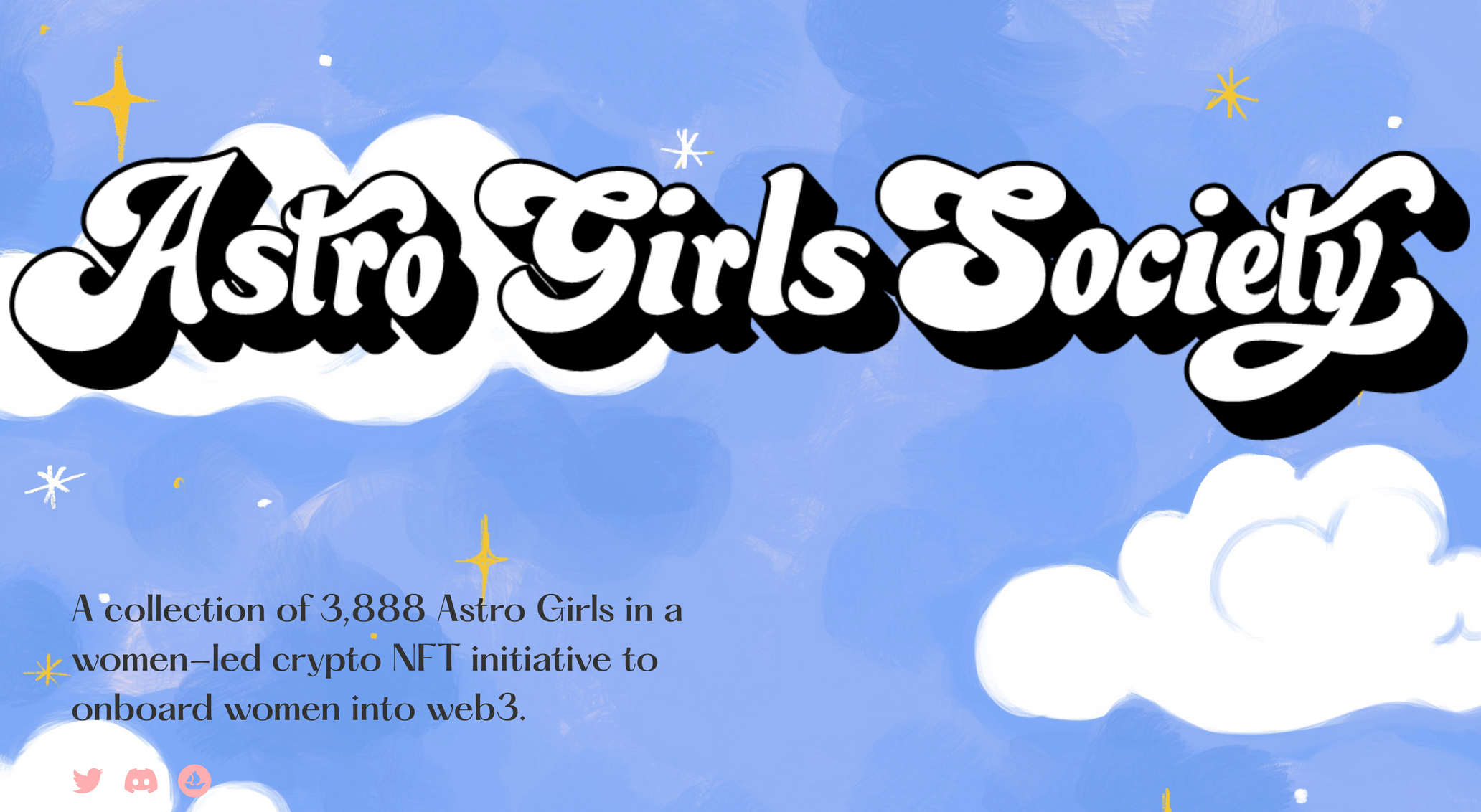
Shii: Japanese men are also a minority, at least in the scope of the international art world. I don’t think DAOs, metaverses, and NFTs could completely fix that problem. For example, the data shows there’s a tendency even for LGBTQIA+ people to choose sperm from white men when they visit the sperm bank. Even for minorities, there’s a part of them that desires power and are stuck in this structure where that power could be the optimal solution. The same goes for DAOs, but even if we try to create a decentralized organization with all seriousness, it’s impossible to decentralize it completely. Someone has to make decisions and take responsibility, so I feel that a central power will inevitably exist. We’re simply going to go around in circles. I think we’re one step closer to human nature, but we haven’t resolved anything yet; we’ve just entered an age where that’s become a relevant topic.
Yamamine: Everyone is talking about that duality. I’ve worked with exhibitions connected to activism and social issues, but museums are simultaneously symbolic and authoritative. I felt a contradiction in how artists, who create radical works, could hold authority. The act of “being radical” gets absorbed into creating the value of art. Another thing: when I was at the Venice Biennale, celebrities from across the world were there. Only a select few could go to Venice, one of the most prominent tourist spots worldwide. It felt weird because, through selected works, the cultural elites at the Biennale grieved and sympathized with disasters happening in the world. I was like, “Isn’t this wrong?” It was as if we were stuck in the world of deception and that people were doing something not to transform society but to make the global rich feel compassionate and happy with themselves. I quit working for museums because I thought the answer was there.
Of course, I understand DAOs aren’t everything. Conversations are happening about how intermediary entities with authority—like what JA (Japan Agricultural Cooperatives) is to vegetables—such as museums and curators create power and exploit it. In terms of blockchain technology, if we could give each refugee a wallet, we would be able to get rid of the middleman and create an appropriate market. But there’s an immense amount of implementation issues. If the structure becomes more direct, a decentralized environment could be born, and the context of value could become rhizomatic. It’s confusing from my position, though (laughs).
Shii: NFTs are infrastructural, so I’m sure it’ll be a positive thing for people, but it’s still unclear how we should move forward and how the world will ultimately look. The other day, it became possible to buy Ethereum directly from your credit card in Japan because Apple Pay integrated with MetaMask. In Japan, you had to go through a lengthy, complicated process: you would open an account with bitFlyer or Coincheck after going through KYC, buy crypto, and send it to a separate MetaMask account to be ready to purchase. It’s possible to access your wallet now because the capital giant, Apple, expanded the number of compatible services. I believe the world will continue to progress; people could be empowered through their computers or gain the courage to leave an organization. Looking at the recent war and pertinent issues, many people must feel like it’s wrong to have a social structure that makes citizens lose their lives because they’re tied to the state.
Yamamine: The war in Ukraine is markedly different from the past because critics sent out a message that spread throughout the globe, which galvanized politicians to take action. The power and narrative driving that sort of thinking became visible to us. I feel like we can finally consider the environment to be ready if a DAO that wants to save others and ultimately democratize economics is born.
A system that connects DAOs, NFTs, and real-life cultures to preserve core cultural values
Sputniko!: I want you, Yamamine-san, to try starting or joining a DAO too.
Shii: That would be interesting. “Yamamine DAO.”
Sputniko!: Current members of many DAOs are mostly from the technology world and not so well-versed in art history. We need people with knowledge like yours.
Yamamine: Something about talking to people online on Discord everyday makes me deflated (laughs). There’s so much I want to do. I want to create a space where artists who’ve had a hard time getting into the market could take action. I want to support these people by using a DAO as a medium and turning projects and by-products born from that process into NFTs and selling them.
One more thing: there are many Japanese architectural heritage sites and industrial arts that could be turned into intellectual property. Whether that’s a sword or armor, artists could use that to make spin-off artwork. If we could make sure people could use those NFTs in other metaverses, then Japanese culture would spread globally and be reinterpreted by others. It could create an interesting secondary distribution unique to its online form. I want to preserve core cultural values by connecting DAOs, NFTs, and real-life cultures.
Shii: That’s extremely important. Many DAOs are run in a gray area, legally speaking. Among those who quickly jump onto a fundraiser on a blockchain, some do it to launder money or get involved with anti-social organizations, making regulations inevitable. Despite it being a system with so much potential to improve society, there aren’t a lot of cases of social significance. But serious people won’t take the lead and will regulate it as something suspicious instead. So, if people think of an apt problem-solving idea for society, I want them to take action.
Yamamine: I have ideas, but there are issues after implementing the technology. It would be fun if we could do something together. You put art into practice, Spu-san, so you must gain a lot of information.
Sputniko!: One key is language. The geographical barriers like living in New York, London, or Tokyo, are starting to disappear in the age of NFT and web 3.0. But there’s a language barrier in Japan, so it’s difficult for a project to develop into something big unless people communicate in English. My friend Emi Kusano-san founded Shinsei Galverse, an NFT Collection based on Japanese anime from the 80s. I have a Shinsei Galverse profile pic too.
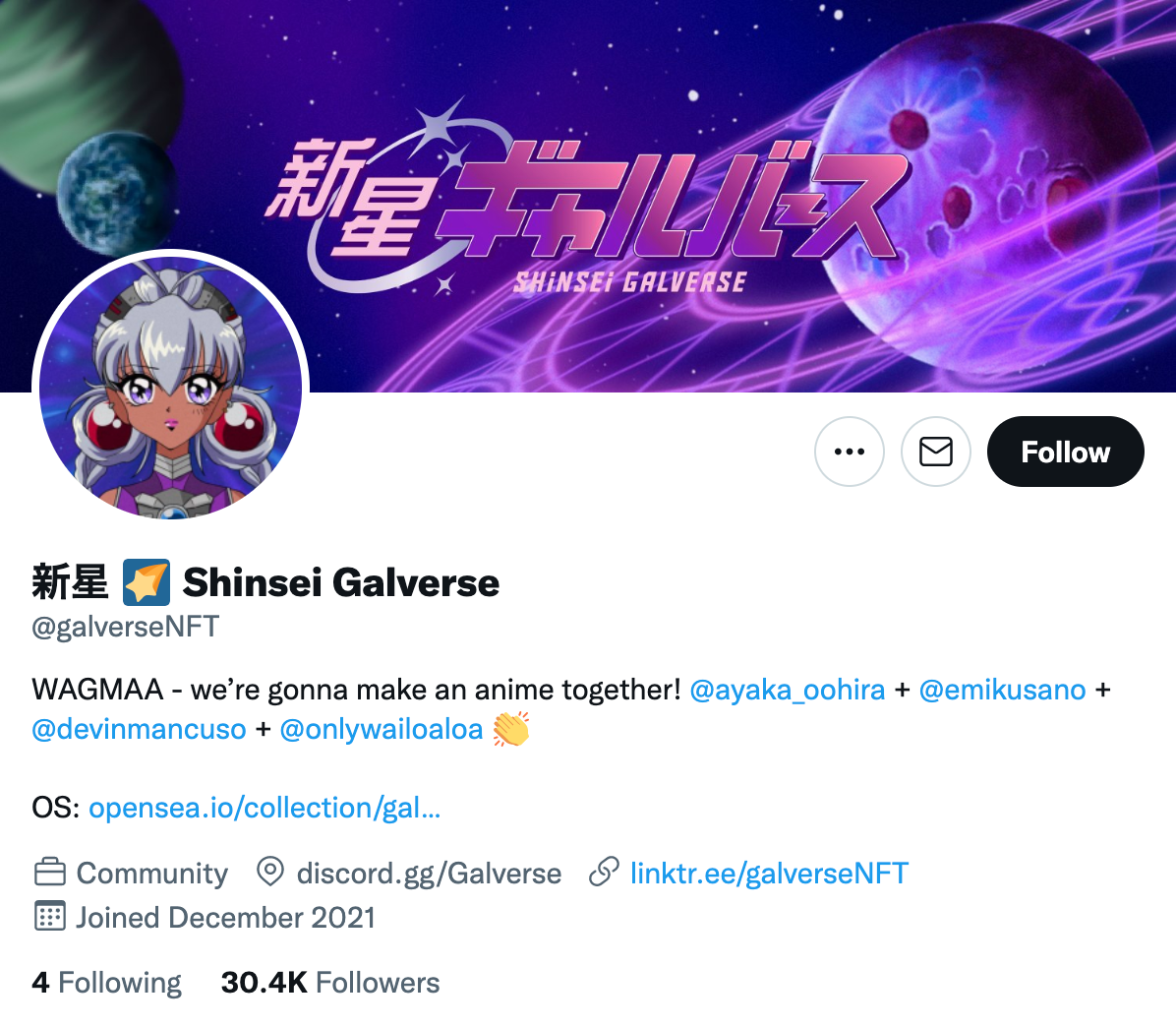
Shii: I have Zombie Zoo Keeper (laughs).
Sputniko!: It’s cute and fun with a great vision of creating the first Anime from NFT. When they launched, many online influencers used Shinsei Galverse as their profile picture on social media. Emi-chan speaks English and has created and gifted some profile pics to prominent influencers. I think they are a great team and they’ll become more and more popular. Even if you’re in Japan, your project can grow if you speak English. It’s essential to have communication abilities for this new era like Emi-chan.
Yamamine: While I think you can make it as an artist, not everyone can talk about their work, and it’s hard chatting online for a long time.
Sputniko!: I’m also the type of person who has difficulty chatting for a long time on Discord or Twitter (laughs).
Yamamine: I mean, it’s a full-time commitment. Much like an auctioneer in charge of slamming the gavel to liven up the mood at an art auction, I hope somebody could manage to communicate and solve the issue of language differences. Also, if cultural assets become intellectual property, then the artist won’t be there, so someone needs to talk on their behalf. It’s a prerequisite for that person to understand the excitement of the online space.
Sputniko!: I can speak English too, but I don’t think I have enough time to manage a Discord group. In Japan, a company called TART shares artists’ works in English on their behalf and makes it easy to reach and sell to influencers.
Shii: They’re amazing. They’ve been doing blockchain-related work and making art since 2019. They do cool stuff, like their marketing for Generative Masks. Their NFT project about developing a depopulated area is interesting too.
Yamamine: I found it interesting when I heard from an acquaintance that residents of a particular apartment complex use DAO to communicate with a union so that the value doesn’t decrease. It’s a project that creates an environment where those with similar issues could exchange incentives. I once got consulted by a prominent figure from Hokkaido, saying they wanted to bring a town back to life with art. The town’s nature is beautiful, and the food is good, so I thought an artist could have a residency there, and word about it would spread. But the issue was about how to connect with people who became fans. I thought about making the depopulated town a second home DAO, somewhere people from out of town could consider it their second home, and digitalize content from there. It’s similar to the idea behind their depopulated-area project.
Sputniko!: I’m sure you could create a community with NFTs with the depopulated-area project, and maybe you could organize an event on a metaverse. When the topic of Apple Pay integrating into MetaMask came up, it reminded me that Apple has that sort of power too. NFTs might become suddenly accessible because of new services or device.
Shii: You can make so many things. And it matches Apple’s branding of keeping personal information private.
Sputniko!: That would make it easier for Japanese people to try and use web 3.0.
The necessity to discuss environmental issues
Yamamine: Also, even if your exhibition is about various environmental issues, the exhibition itself could merely be symbolic. There’s a contradiction, like, “You’re using a lot of energy costs for that?” It begs the question: does showing something symbolically, even if it’s short-lived, inspire actions that lead to solutions? People say art is postmodern, but we haven’t been able to escape from modernism. It’s not about paying attention to certain tricks, like subdividing methodologies and artists and creating stereotypes like being a “revolutionary” with a revolutionary vibe rather than truly bringing about change. It’s about what we can do. I hope discussions about creating DAOs to solve environmental issues could progress.
Sputniko!: Rather than rejecting or judging this from the outside, I want to make the system eco-friendly from the inside. But we should remain critical, and thanks to that, NFTs and Ethereum, in general, have partially been updated. It’s been said Ethereum will move to Ethereum 2.0, where there will be a dramatic decrease in using energy thanks to PoS (Proof of Stake). There have been developments to create something friendlier to the environment through system design, like how Rarible, an NFT platform, introduced a button that removes the carbon footprint generated by the NFT you purchased.
Shii: When gas prices rose, I migrated to Polygon. But many people who wanted to issue NFTs, which are assets, wanted it to be Ethereum-based, and because Polygon is making efforts to reduce various processes through Proof of Stake and such, it crashed a lot and became less reliable than Ethereum. It’s not like we use Polygon because it’s good; we use it because it has the foundation and trust factor of Ethereum. It’s a problem concerning humanity as a whole. We have to create better solutions by engaging with such things.
Yamamine: Right. We all eat meat and produce a large amount of waste. As long as we’re around, including museums, gray areas will always exist. I have doubts about discussing things only after we categorize matters into what we’re conscious of and otherwise. Many people talk about content and business schemes, but in reality, we also need to talk more about energy-efficient hardware, efficient engineering, and infrastructure.
Shii: Of course, you’re right. We can also reduce transaction costs by reducing source codes as much as possible. There’s this law called the law of accelerating returns, and it’s said when the world improves its technological abilities for a goal, geniuses always appear, and ultimately, technology evolves rapidly. The spread of the internet has sped up the collection of training data, which has accelerated the evolution of artificial intelligence. I believe this will continue to happen at the hardware and protocol levels.
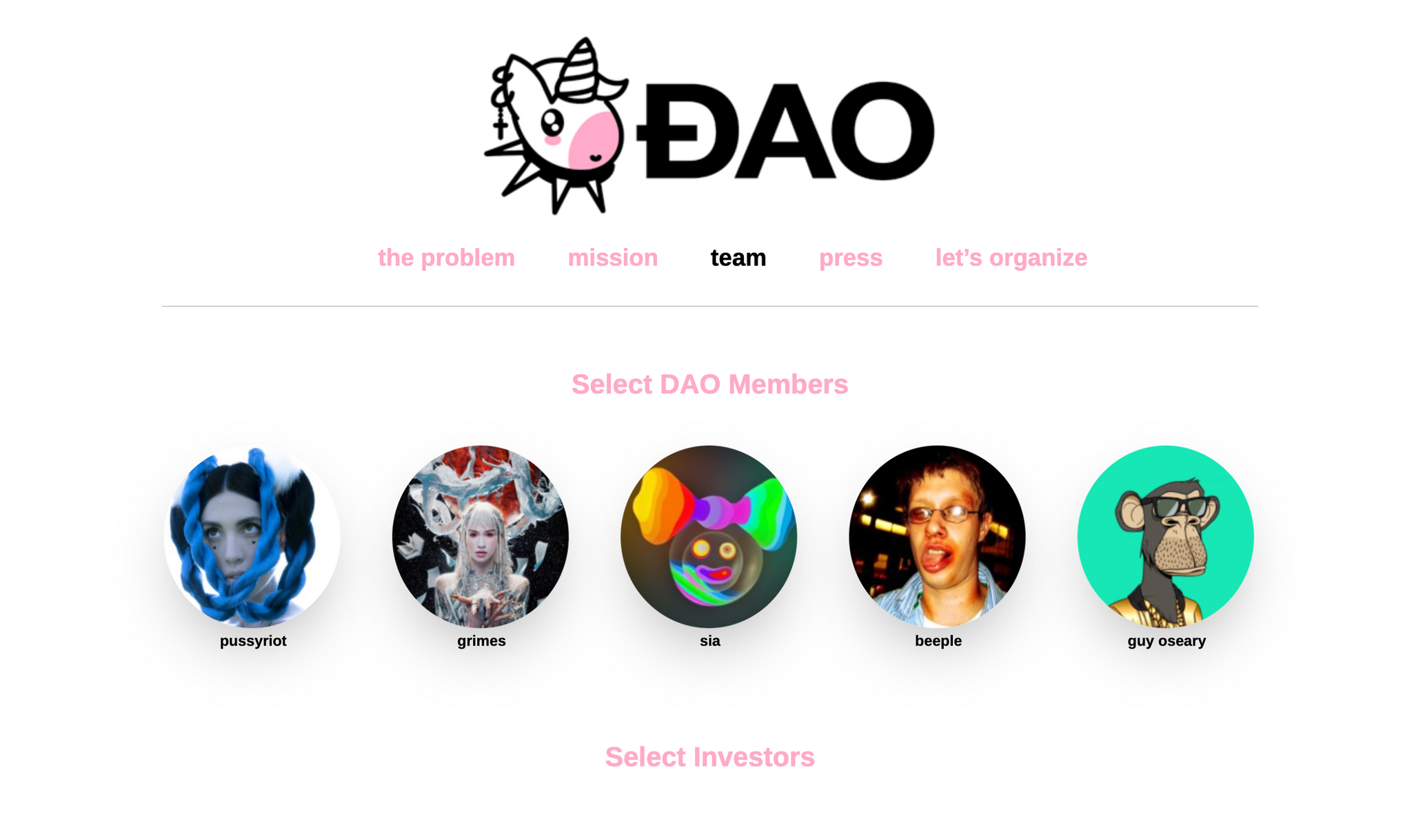
Sputniko!: In any case, times of change are so interesting. I have a desire to challenge norms and conventional methods. It’s fun to jump into mayhem and move around precisely because there are twists and turns. I want to support movements trying to include more women in the NFT space, like Unicorn DAO and Astro Girls, and I want them to push forward. I’m excited to see your DAO, Yamamine-san.
Yamamine: Regarding the NFT infrastructure, marketplaces are appearing in Japan. But intellectual property like cultural assets, architecture, and anime must connect with a foreign audience who likes Japanese culture. mixi did come out of Japan as a social media platform, but Facebook became the standard. One strength of platforms is that they can dominate globally, but it’s difficult for the first Japanese social media platform to compete. But Japan can win with content. Content owners need to remain resilient on platforms in the marketplace. If a particular metaverse is gone, the corresponding metaverse content shouldn’t disappear. We should have a universal situation where you could use said content on another metaverse. Because of the language barrier, I feel like Japan won’t be able to compete against the world in terms of infrastructure, but we have a lot of cultural assets, so it’s about how we utilize them.
Sputniko!: I feel like Nintendo’s an ideal Japanese company. It’s like they could dominate the world with the power of their content.
Shii: This is a big subject, but Takashi Murakami-san’s art career has that element. There’s a bottom-up aspect to Japanese culture supported by many people, whereas abroad, it’s top-down. Art is often marketed with phrases like “Queen Elizabeth-approved” or “MoMA’s permanent exhibition.” Murakami-san is in an interpreter-like position between bottom-up and top-down cultures. His movement, Superflat, applies to a hierarchy-free information society and the “superflatness” of NFTs. It’s imperative to understand his body of work because this will be a keyword when Japanese artists go out into the world. At the same time, many trendsetters within the NFT market are in America, but it’s not like the center is always there. The market is spreading worldwide. People say the marketplace in Japan isn’t exciting, but to summarize, NFTs aren’t just a technological movement, as it’s a new infrastructural revolution. We should seriously engage with this information society. No matter how it develops, nation-states and communities will always exist, and we can’t cut off our physical selves. The question will be about how we can negotiate.
I don’t have a clear answer, but what I mean by a missing piece being born within this information society, which I said at the start, is that the creative field has finally entered the internet age, full-on. In the past, artists had to foster a community to sell their work, but only about 30 people, at most, could physically access them. I wonder if physical restrictions are gone because of this information society, and the denominators for people to access works from all over the world have just increased. In that case, the essence hasn’t changed much. I feel like informational tools will only remove the physical walls we had. But pushing that dynamism is important. I want to keep being involved. In my conversations over the past couple of years, I haven’t been able to talk about what we did today. I had a lot of fun.
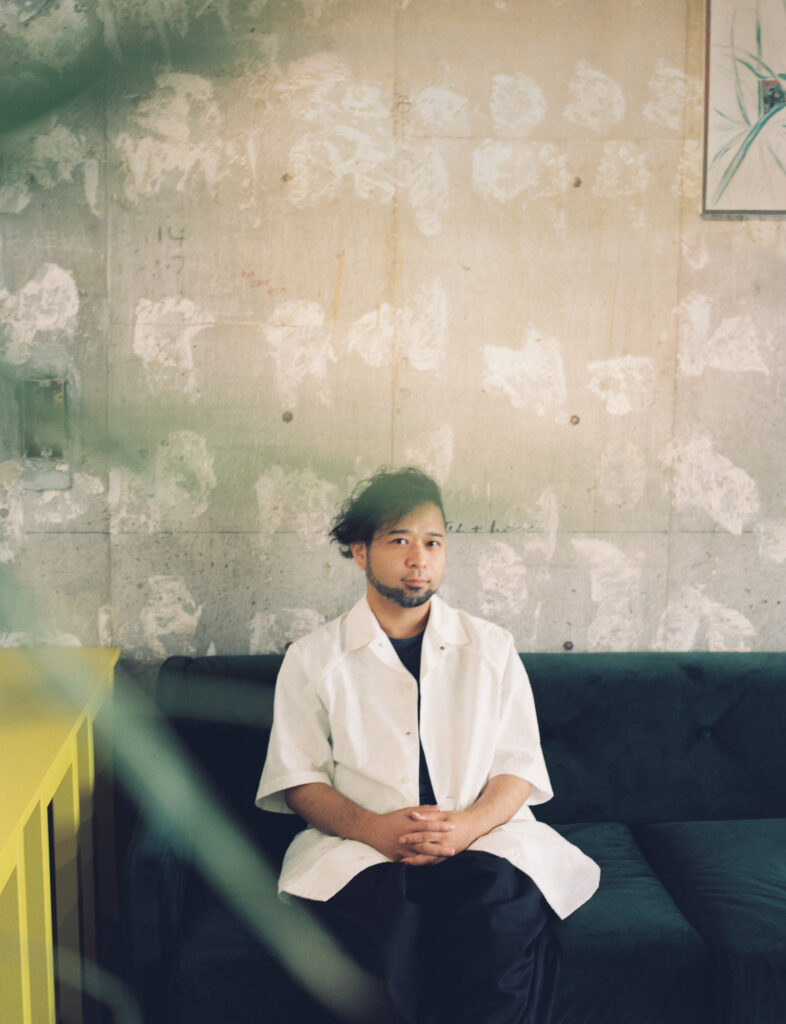
Junya Yamamine
Junya Yamamine is a curator and representative director of NYAW. After working as a curator at the Tokyo Photographic Art Museum, the 21st Century of Contemporary Art, Kanazawa, and Art Tower Mito’s Contemporary Art Center, Junya Yamamine became involved in managing projects for ANB Tokyo in Roppongi. He also organizes and oversees the Meet Your Art Festival by Avex and art projects by the media and corporations. Yamamine’s notable exhibitions include The World Began without the Human Race and It Will End without It. (National Taiwan Museum of Fine Arts).

Taihei Shii
Contemporary artist. Representative director of Startbahn and Art Beat. Taihei Shii spent his childhood in America. He graduated from the University of Tokyo Graduate School of Interdisciplinary Information Studies. After completing the Tama Art University Painting Course in 2001, Shii began creating art based on the concept of art in the age of the internet. He shows his works at galleries and museums today. He conceptualized Startbahn in 2006, earned a patent in the US, and launched it while being in grad school. Shii became the representative director of Art Beat in 2020 and has given speeches at various lectures and panel discussions.
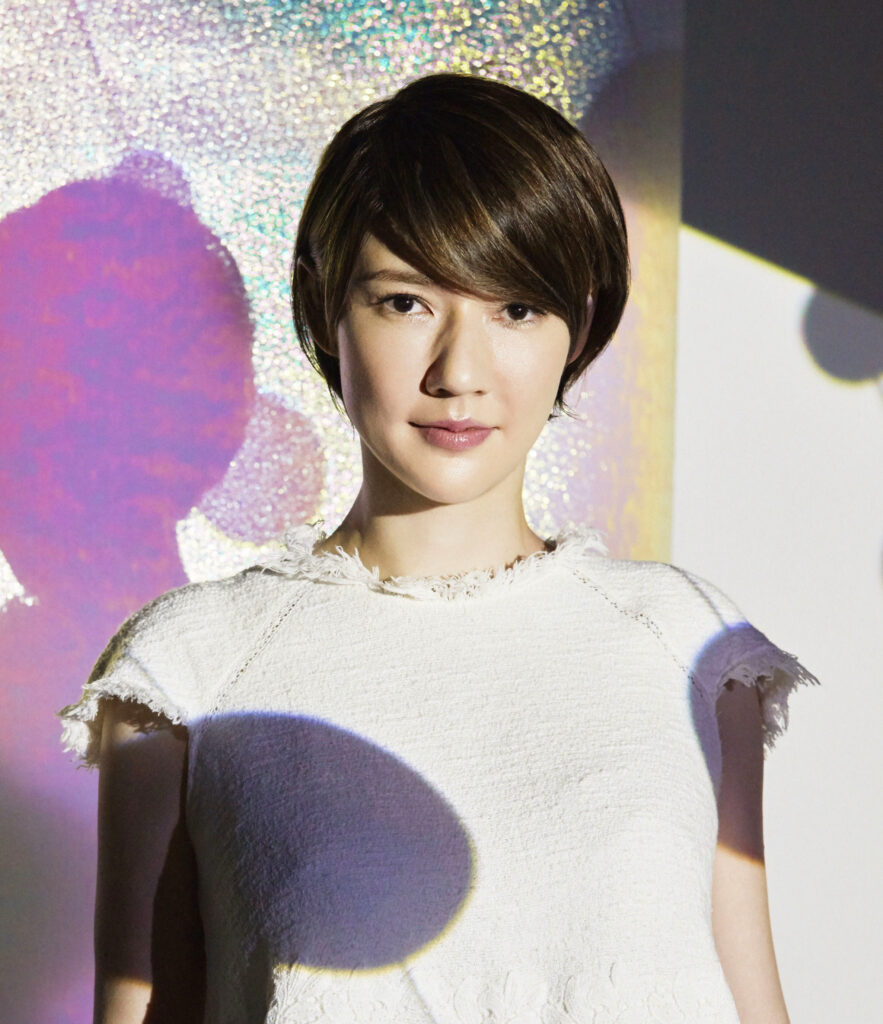
Sputniko!
Sputniko! is a multi-media artist and filmmaker creating works on themes of technology, gender and feminism. Her work has been exhibited at the MoMA, Centre-Pompidou Metz, V&A, the Cooper Hewitt, Mori Art Museum, and she was awarded Vogue Japan Woman of the Year in 2013. Sputniko! taught at the MIT Media Lab as an Assistant Professor and was the director of Design Fiction Group from 2013 to 2017. She is currently an Associate Professor at the Tokyo University of Arts. Sputniko! has also been selected as a TED Fellow and gave her TED Fellow talk in TED 2019. She was also selected as one of the Young Global Leaders by the World Economic Forum and moderated sessions in Davos 2020. To date, she has had her works included in the permanent collections of museums such as the Victoria and Albert Museum (UK) and the 21st Century Museum of Contemporary Art, Kanazawa (Japan).
Translation Lena Grace Suda

